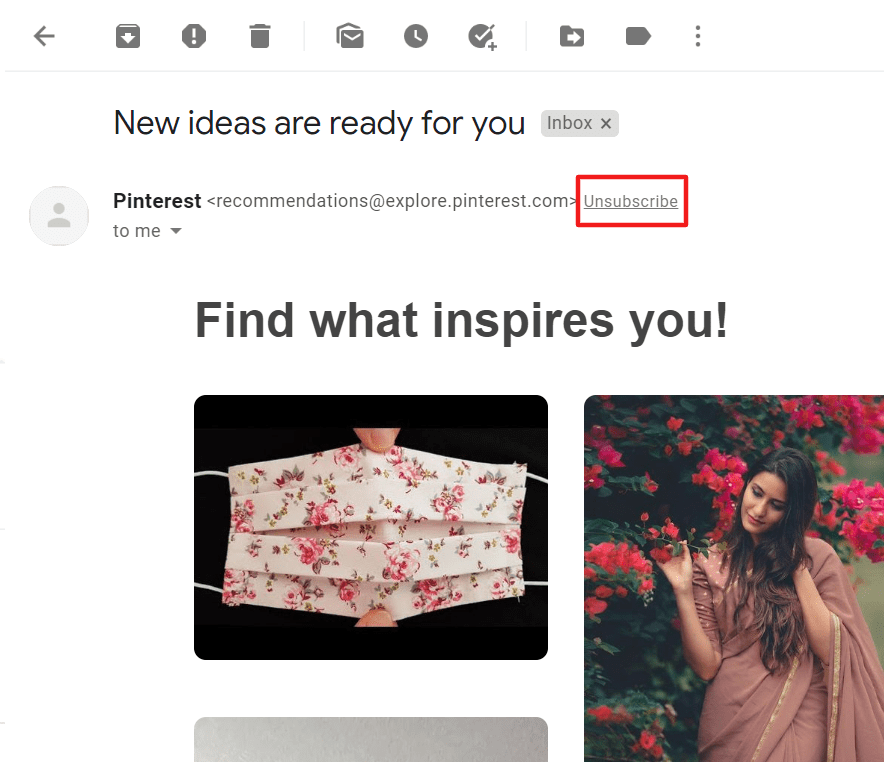
This article will look into the list-unsubscribe header and why it’s important in the world of email marketing.
There’s a lot of unwarranted hesitation from email marketers when it comes to embracing the list-unsubscribe header. Letting email recipients quickly and easily unsubscribe may seem counterintuitive, but it’s actually a great way to build a healthy email list.
Read on to learn about list-unsubscribe headers and why, for you as a marketer, this feature is key to maintaining an engaged email list in the long run.
- What is the list-unsubscribe header?
- What is the purpose of a list-unsubscribe header?
- How does a list-unsubscribe header work?
- Does my email client support list-unsubscribe?
- How do I create a list-unsubscribe header?
What is the list-unsubscribe header?
The list-unsubscribe header is an additional ‘unsubscribe’ link generated by some of the most common email providers (Gmail, Outlook, etc.) when list-unsubscribe instructions are detected in the email header.
It gives email recipients the opportunity to remove their email addresses from your distribution list without searching for the unsubscribe link in your email message.

Example of a list-unsubscribe header
What is the purpose of a list-unsubscribe header?
The list-unsubscribe header is an embedded link positioned prominently in the heading of an email. It gives the recipients the ability to opt-out of emails easily without having to sift through the contents of the email to find an unsubscribe link.
It benefits the recipient by giving them a simple way to unsubscribe from email campaigns. But it also protects the reputation of senders by significantly reducing the number of unsubscribes and spam complaints.
List-unsubscribe headers help you comply with rules and regulations regarding spam. They’re also a way to prevent recipients from hitting the spam button, keeping your email sender reputation intact. When your reputation is tarnished, it negatively affects your email deliverability.
Some marketers go for quantity over quality in terms of their email lists, but that’s not a sound practice. If you have a high number of subscribers but low engagement, your email list isn’t working for you as well as it could.
A prominently displayed link to unsubscribe in the header shows confidence in the quality of your messaging. It also provides a way to reduce the amount of subscribers that don’t actively engage with your content.
Important to note: Since February 2024, Gmail and Yahoo! sender requirements ask that all email marketers use list-unsubscribe headers if they send mail to Gmail or Yahoo! users. Luckily, Brevo does this already so if you’re a Brevo client there’s no need to worry.
How does a list-unsubscribe header work?
The list-unsubscribe header is only displayed when a mail client finds the requisite instructions embedded in the email’s header.
There are two methods for implementing a list-unsubscribe header: Mailto and http (or URL). To make it easier to remember, mailto is the email-based method, and http is web-based.
Mailto
This is the most frequently used method for generating a list-unsubscribe header. Mailto sends an email with an unsubscribe request on behalf of the unsubscribing party.
The mailto method requires that you provide your email service provider (ESP) with a dedicated email address to which unsubscribe requests are sent. It can be something very simple such as [email protected].
Your ESP will then embed the correct syntax and email address into the header of your emails. (Depending on your ESP, this might already be done automatically — more on that below).
Bear in mind that you must monitor the inbox dedicated to unsubscribes and manually remove email addresses from your mailing list when emails arrive.
Http
The http (or URL) method sends users to a landing page where they’re asked to confirm their unsubscribe request. To use this method, you have to set up a dedicated landing page and link it to your ESP, asking it to embed it into the email header.
Both http:// and https:// URLs can be used in the http method. When building your landing page, ensure that users don’t need to enter any credentials or select checkboxes in order to complete their unsubscription. The goal is to make the process as simple and painless as possible for the end users.
Because your recipient’s email client may not support http list-unsubscribe, it’s best practice to use the mailto and http methods in conjunction with one another to cover all your bases and better protect your reputation.
Related: View This Email in Your Browser: What Is This Feature & Why Is It Important?
Does my email client support list-unsubscribe?
List-unsubscribe headers are perfect for fostering better engagement with your recipients. But before you set up your dedicated email address or landing page, make sure that your email client supports list-unsubscribe headers.
While the list of those who do support list-unsubscribe headers is short, they’re the most popular email clients, covering a significant portion of email users (and likely your subscribers).
The main email clients that support list-unsubscribe headers are Gmail, Outlook, ios Mail, and Yahoo! Mail.
How will I know if my active campaigns support list-unsubscribe headers?
To check if your current campaigns support list-unsubscribe headers, take a look at the headers themselves. Open the original message and search for a mailto link or an unsubscribe URL (or, ideally, both).
Gmail
Gmail is one of the biggest names in email service providers. When it comes to Gmail and list-unsubscribe methods, the better your sender reputation is, the more you’ll get out of their list-unsubscribe tools.
In February 2024, Gmail introduced new anti-spam guidelines for bulk email senders. Senders must have a one-click unsubscribe functionality in order to reach Gmail users. Following Gmail’s sender guidelines will help keep your emails out of the spam folder, as well as improve your message open rates and click through rates.
Gmail supports both mailto and http methods so you can choose which is right for you. However, it’s important to note that Gmail actually prefers (and frequently recommends) the mailto option.
A feature that sets Gmail apart from other email clients is that it also supports one-click unsubscribe in accordance with RFC 8058.
When you open the original message on Gmail, you’ll be able to spot the list-unsubscribe header instructions.

Outlook
To enable list-unsubscribe headers in Microsoft Outlook, you must have a good sender reputation. The only method for list-unsubscribe that Outlook.com currently supports is the mailto method.
Read more: How to send mass emails in Outlook
iOS Mail and Yahoo! Mail
Just like with Outlook, senders who use Apple iOS Mail and Yahoo! Mail can only use the mailto method when enabling list-unsubscribe. Like Gmail, Yahoo! Mail also supports one-click unsubscribe.
How do I create a list-unsubscribe header?
There’s no clear-cut answer for this question, as it depends entirely on the protocols of your ESP. The best way is to reach out to your ESP’s support team and see what steps you need to take in order to enable it.
Some automatically add list-unsubscribe to their outgoing emails, and with others it must be done manually. Checking directly is the best way to know for certain.
Brevo lets you send emails with a list-unsubscribe header by default — you can also add an unsubscribe link to the email footer
Add a list-unsubscribe header to your emails with Brevo
The most important thing you can do to eliminate unsubscribes and spam mail reports is to give your recipients opt-in options at signup. This will give you a healthy mailing list and good sending reputation.
The more customization options of inbox preferences you provide, the better relationship you’ll foster with your subscribers.This strengthens not only your sender reputation but your overall brand reputation as well.
If you’re looking for an email marketing tool with an easy-to-use unsubscribe feature, try Brevo. In Brevo, the list-unsubscribe header is automatically added to all marketing and transactional emails, so no extra effort is needed on your part.
Sign up for Brevo’s email marketing service for free and send up to 300 emails a day.
Make it easy to unsubscribe with BrevoFree plan includes access to all core email features, 300 emails/day, 40+ email templates, list-unsubscribe headers/footers, contact segmentation, and customizable signup forms. |






